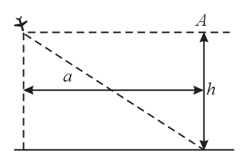L.A.Sena Solutions for Chapter: Oscillatory Motion and Waves, Exercise 1: Exercise
L.A.Sena Physics Solutions for Exercise - L.A.Sena Solutions for Chapter: Oscillatory Motion and Waves, Exercise 1: Exercise
Attempt the practice questions on Chapter 6: Oscillatory Motion and Waves, Exercise 1: Exercise with hints and solutions to strengthen your understanding. A Collection of Questions and problems in Physics solutions are prepared by Experienced Embibe Experts.
Questions from L.A.Sena Solutions for Chapter: Oscillatory Motion and Waves, Exercise 1: Exercise with Hints & Solutions
The formula that expresses the speed of sound in a gas can be written in the following form:
Here is the specific heat ratio (the ratio of the specific heat capacity of the gas at constant pressure to the specific heat capacity at constant volume), is the pressure of the gas, and is the density of the gas. Using this formula as a basis, can we stipulate that upon isothermal change of the state the speed of sound in the gas grows with pressure?
A source of oscillations is fixed to the riverbed of a river whose waters flow with a velocity . Up and down the stream there are fixed (also to the river bed) two receivers, and (see the figure). The source generates oscillations whose frequency is . What frequencies do receivers and register?
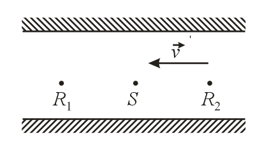
Two boats are floating on a pond in the same direction and with the same speed . Each boat sends, through the water, a signal to the other. The frequencies of the generated signals are the same. Will the times it takes the signals to travel from one boat to the other be the same? Are the wavelengths the same? Are the frequencies received by the boats the same?

An underground explosion at a point generates vibrations. Seismographs that are capable of measuring longitudinal and transverse waves separately are placed at another point . The time interval between the arrival of longitudinal and transverse waves is measured. How, knowing the velocities of propagation of longitudinal and transverse waves and the time difference between arrival, to determine the distance between points and ?

A sound wave travels in air and falls on the interface between air and water at an angle . At what angle will the wave propagate in the medium: greater than or smaller than ?
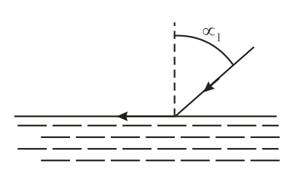
There are many documented cases when an explosion at a point will be heard at a point that is located far away from while in a certain region, known as the zone of silence, located much closer to than to the explosion is not heard. Among the reasons for this is the deflection of sound waves caused by the presence of a vertical temperature gradient in the atmosphere. How should the air temperature change with altitude for the direction of propagation of sound waves to be as shown in the figure?
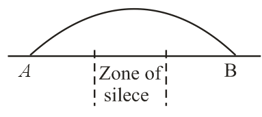
At a depth below ground level there is a pocket of water of depth . What type of artificial seismic waves, longitudinal or transverse, is needed to measure the depth of the water pocket?
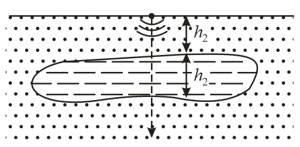
An airlane is in supersonic flight at an altitude . At what smallest distance (along the horizontal) from the observer on the ground is there a point from which the sound emitted by the airplane motors travels to the observer faster than from point that is directly above the observer?
